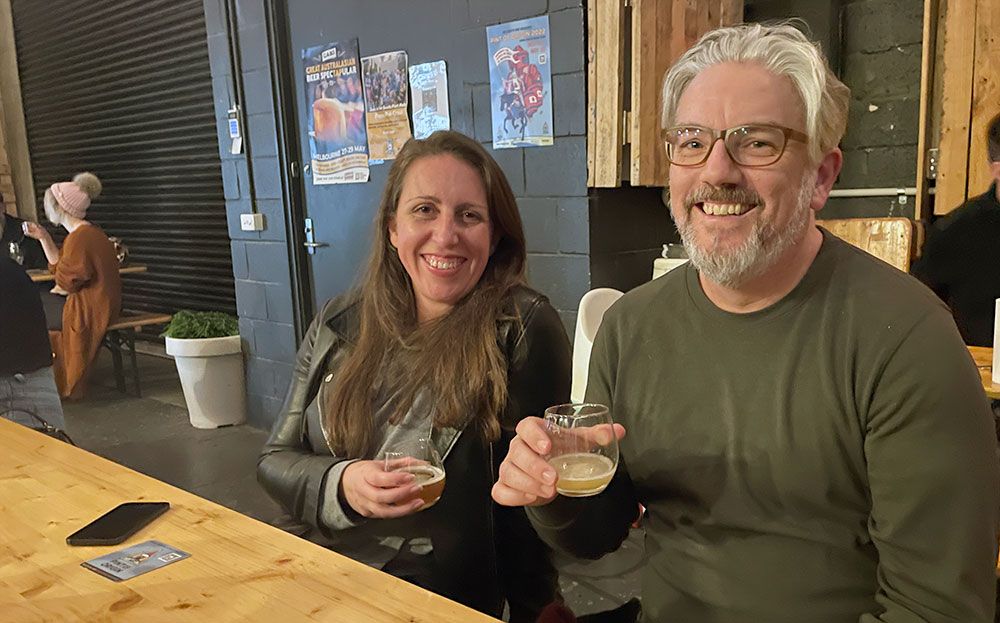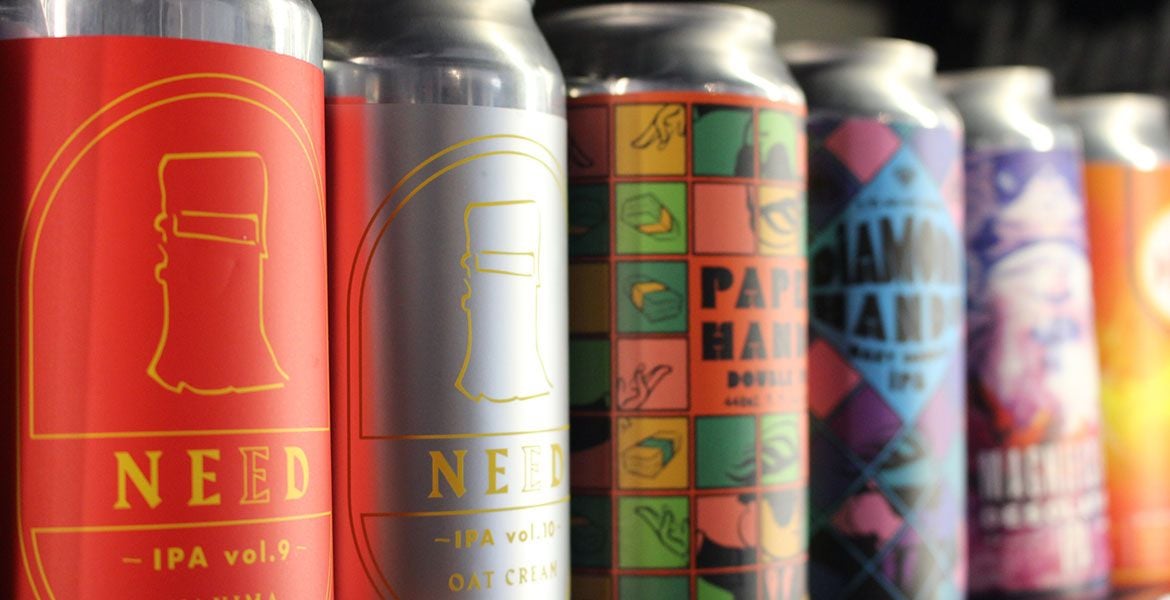For many years, if there was an ownership change in the brewing industry it would almost always be a case of one business being acquired by a far larger one – or going out of business entirely. But, increasingly, the ownership landscape in Australia has moved from Big Beer vs Indie Beer, black and white, into something more complex and nuanced.
There have been the groups we’ve termed Indie Families – a part of the Who Owns Your Beer? section on The Crafty Pint that’s already in need of an update and changes, seemingly, with every month. Within that space you have the likes of Good Drinks, born from Gage Roads and now including brands such as Atomic, Matso’s and Stomping Ground, Fermentum, launched by Stone & Wood and going on to create or acquire brands including Fixation and Two Birds before selling to Lion/Kirin, and Tribe Breweries, which owns the likes of Stockade, Mornington Peninsula Brewery and Wilde GF Beer.
While those groups were formed by existing brewing companies, Mighty Craft – formerly Founders First – entered the industry when they invested in Jetty Road before taking a share in, or full ownership of, brewing companies such as Ballistic, Sauce, FogHorn, Slipstream, Sparkke and Mismatch. Elsewhere, we’ve seen Catchment buy Fortitude and Little Bang sold to an SA pub group while the country's major retailers are backing their own indie-mimicking craft brands to snap up a significant chunk of market share.
The arrival of the Local Drinks Collective, whose founders expect to welcome more member breweries, adds another shade of grey to the picture that was once more obviously black and white. In crafting their model, the teams at Wayward and Batch took elements of various existing models – both here and overseas, both within and without the beer industry – and have attempted to fashion a version that suits their particular needs.

It will be fascinating to see how it’s received, not just by consumers but by other independent breweries who exist in that middle ground between the two models accepted as viable in Australia: brewpubs or being one of the biggest in the country with sales of 1.5 million litres or more per annum.
“Anybody in that medium size where we are, every brewery we’ve spoken to, is experiencing exactly the same challenges that we are,” LBC co-founder Pete Phillip of Wayward told this site earlier. “I believe everybody wants to get these economies of scale to compete with the big boys.
“This is just one model. We think it has the right elements to it, but we don’t have a crystal ball.
“It’s not the easiest model to get your head around. It’s taking a lot of elements of a lot of different models to try to overcome what we think are the pitfalls with some of the other models. And we’re kind of relaxed as long as the customers are happy.”
Andrew believes it’s just another step in the craft beer’s ongoing evolution, and expects to see a lot more change over the coming 12 months as the industry moves beyond its “Bohemianism” phase.
“We have to stay on our toes and work out what drinkers are saying and figure out what people like,” he says. “We have to maintain a connection to our local communities, and that’s what we’re trying to do here. We’re all growing but don’t want to forget where we come from. We’re trying new and different things.”
He also believes the market will respond well and suspects there could be a domino effect, whether that’s people knocking on their doors to find out more about their plans, or looking to do something similar.

For Independent Brewers Association CEO Kylie Lethbridge, today's move is something to be applauded. And, she suspects, a sign of the times; consolidation, she says, is the "talk of the town".
In a previous role before joining the IBA, she spent time examining cooperative approaches in the world of farming, specifically looking at models implemented by farmers in the Prague region – sharing technology, buying power and so on – and says the takeaway was that those steps helped them compete better with supermarkets.
"It's not been a fly by night decision [by the Local Drinks Collective]," she says. "There's been a lot of work put into the model – I've asked Pete 58 questions about how excise works within the new model – and I think we need to celebrate them for trying to build a more sustainable model that means they don't have to go cap-in-hand to a bank, to an investor, or to a fundraiser or a crowdfunding raise.
"They want to see as many breweries maintain their independence as they can. I think they have a grander vision, which is to make something that allows one or two or ten or 50 [breweries] to be able to compete with the big guys. There's no doubt that it's tough. I'd back them and give them their best chance to succeed."
Kylie says talk of consolidation has been coming "thick and fast" in recent months, with people referencing the Australian wine industry in the 90s: a period of rapid growth, a steadying out, then consolidation. At the same time, she says they're still seeing a considerable number of new entrants to the industry.
"I'm also hearing there's not a lot of for sale signs hanging on the shingles," Kylie says. "We know there's a few [on the market] for various reasons, but there have to be these other discussions or conversations going on behind the scenes.
"It's very much 'watch this space' over the next six months to see who's with who. Maybe people will jump on board with this, as I know they are talking to other partners, and then there may be some other models we'll see and people will get behind them."
André Sammartino, Associate Professor in International Business at the University of Melbourne and a commentator on the beer industry (pictured below right), describes is as "a logical and promising step that could assist the member breweries considerably" with significant efficiency gains to be made in shared input purchasing, production and distribution.
"A collective with five members will have a lots of crossovers in what they purchase in terms of malt, hops, packaging, equipment etc, so that seems a no-brainer in terms of cost savings – if nothing more, the suppliers will enjoy having fewer conversations," he says. "Sharing a sales and distribution function, especially across cities and states, will mean so many more consumer touchpoints and savings through consolidation. Even if it were just Wayward and Batch, cutting down the number of sales conversations, delivery stops and truck fleet by half while achieving the same sales as present would represent a considerable ‘win’."

However, it's on the brewing/production front where there could be the greatest gains.
"Imagine if each member brewery bit the bullet on rationalising portfolios and looked at interstate production of some of their main lines – if Wayward’s Raspberry Berliner Weisse was also brewed at scale in a brewery in Melbourne or Brisbane, or Batch’s Elsie the Milk Stout," André says. "Presumably, this would dovetail well with the input and logistics savings and help get products on shelves and taps quicker and cheaper than currently.
"It's an economies of scale and scope play – get larger with lower average costs, and share skills / activities / investments in a way that reduces ‘slack’. For the members, the aim will be presumably also to turbo charge exposure and reach. A shared, aligned portfolio of beers marketed and sold nationally – or at least on the East Coast – through all the chains would presumably be a win for all involved.
"Of course, the devil is in the detail. The announcement points to a shared services / buying group type model with two to five member firms. The ability to achieve the sort of efficiencies I have identified rests on astute communication and negotiation between all parties. It will test egos as efficiencies surely mean trimming some beers out of the shared portfolio.
"Will brewery teams as happily spend days working to partner breweries’ recipes? Will taproom staff as enthusiastically promote partner breweries’ beers and seltzers? And will there be sufficient 'upskilling' from working together?
"One peril of bringing together teams is that there may not be the requisite skills to handle the scale. It is certainly not guaranteed the Collective will be more than the sum of its parts." (See more from André below)
However this project works out, it's certain the landscape looks far different to even five years ago. And now that the pause – or at least departure from the norm – that the pandemic brought crashing into the industry's evolution is becoming a thing of the past, it will be fascinating not just to see who's still standing come next winter, but where exactly they stand too.
You can read our initial article on the formation of the LDC here.
More on the implications of the LDC from Associate Professor André Sammartino
Do many local or international national businesses (in beer or otherwise) spring to mind that have shown this approach to be a successful pathway to growth?
As Peter points out, such alliance / cooperative models have worked pretty successfully in wine, for example in France, Italy, Spain. The logic is even clearer there when the underlying businesses are often family-run, small-scale wineries with limited scope to scale up production, but have real potential to share marketing, sales and purchasing. Indeed, the agricultural co-op is one of the oldest business forms as it allows for pooling of machinery, labour, processing and so on, and also the shared marketing of products – think of milk co-ops, for example. We also see it on the supply side in beer, with hops co-ops hooking up on the sales and also the R&D front.
There is pretty compelling evidence in each of those arenas that such collective entities can be successful. Studies have shown them outperforming corporations in wine, and surviving and prospering over long periods in agri-business. The evidence also points to the need for very sound governance, transparent accounting to all partners, and for a clear agreed set of growth targets.
CANarchy are also a clear model in beer, and that collective appears to have achieved most of its growth aims, obviously at a much bigger scale.
What do you think a merger like this says about the craft beer industry broadly? Is it a sign of a contracting market, a tougher market, a consolidating or maturing trading environment? All of the above? None of the above?
I’ll go with “most of the above”. I don’t think contraction is happening, but there could possibly be a slowing down of growth for breweries of Wayward and Batch’s size. They could be in what we often refer to as ‘the chasm’ between local / hyperlocal and "big enough".
That the two of them combined are likely to be only the 20th to 25th largest producer in the market means they really would be battling to stay price competitive with the bigger players, especially when you throw the private labels of Endeavour Drinks etc in there.
Consolidation is a very attractive tactic for leapfrogging up the league table and getting a "seat at the table" in terms of working with the large retailers, hotel groups and so on. Fermentum, Good Drinks, Mighty Craft and Tribe have all paved the way here. And with folks like Brick Lane – and, to a much lesser extent, Hawkers – launching at scale, it would seem time is of the essence for breweries who want to ever get to a size that keeps them in the national game.
Do you think we can expect to see more moves like this where breweries look to merge rather than sell to major breweries, hospo groups or private equity / Mighty Craft, which has been the case with indie brewery sales in recent years?
I’m sure a lot of other breweries – outside of whoever is already in talks to join – will be watching this very closely. It represents a possibly happy compromise option relative to exit via acquisition. It is also not clear whether some of these options should be viewed as mutually exclusive.
It is conceivable that PE, or even crowdfunding, could form part of any collectivisation initiative such as this. And, as the parties have been quite open about, a public listing might also result down the track.
Dr Sammartino interviewed by Will Ziebell.

















